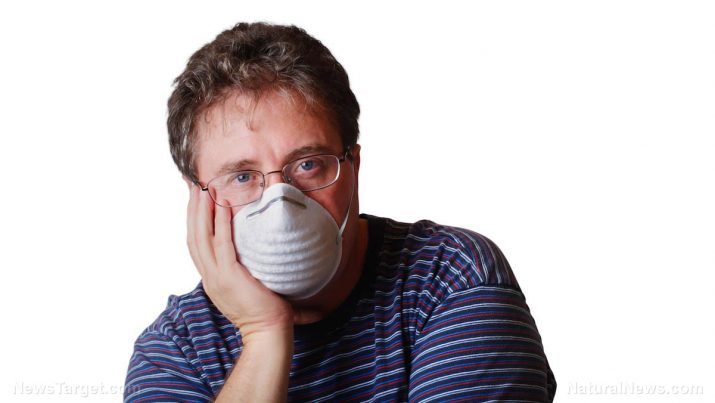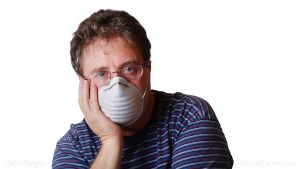
Anthrax – causes, side effects and treatments at NaturalPedia.com
Wednesday, January 03, 2018 by Zoey Sky
http://www.naturalpedia.com/anthrax-causes-side-effects-and-treatments-at-naturalpedia-com.html

Anthrax, a disease caused by Bacillus anthracis, is a germ that lives in soil. Anthrax is rare and it affects animals (e.g. cattle, sheep, and goats) more often than people. Do take note that people can get anthrax from contact with infected animals, wool, meat, or hides.

Known side effects of anthrax
Anthrax can cause four forms of disease in people:
- Cutaneous – This affects the skin, and people with cuts or open sores can get anthrax if they touch the bacteria. This makes up 80 percent of all anthrax infections. Cutaneous anthrax symptoms include muscle aches and pain, headache, fever, nausea, and vomiting. While the illness usually resolves in about six weeks, deaths can occur if patients do not receive appropriate antibiotics.
- Gastrointestinal – Affects the digestive system, meaning you can get it by eating infected meat. The symptoms of this form of anthrax include nausea, loss of appetite, bloody diarrhea, and fever followed by abdominal pain.
- Inhalation – Affects the lungs, which means you can get this if you breathe in spores of the bacteria. The first symptoms are subtle, gradual, and flu-like accompanied by a sore throat and headaches. In a few days, the illness worsens and there may be severe respiratory distress with shortness of breath and pain in the chest and/or muscles. Some patients can cough up blood. Shock, coma, and death follow.
- Injection – A new form of anthrax, this has been identified in heroin-injecting drug users in Northern Europe. It has yet to be reported in the U.S. Symptoms can appear after days or months. Symptoms can include small blisters or bumps that may itch at the injection site, fever and chills, swelling around the sores, and deep abscesses under the skin or muscle. Painless skin sores with black centers or dark scabs can appear after blisters or bumps develop.
Body systems harmed by anthrax
Anthrax consists of three proteins. While none of these proteins is toxic on its own, they can be a lethal mix when combined. They can disrupt cellular signaling pathways and prevent cells from working properly, shut down the host’s immune system, and cause death.
Anthrax meningitis is a type of anthrax that may complicate any form of anthrax and spread throughout the lining tissues of the central nervous system and to the brain.
Food items or nutrients that may prevent anthrax
Consuming these foods can help prevent anthrax:
- Pokeweed – Pokeweed may be used as a treatment for anthrax. However, avoid it if you are allergic/hypersensitive to pokeweed, its constituents, or any member of the Phytolaccaceae family.
- Red yeast rice – Red yeast rice may be used to treat anthrax infections. Take note that you must avoid if you are allergic or hypersensitive to red yeast.
Treatments, management plans for anthrax
Treat anthrax immediately to prevent the levels of toxins and harmful bacteria within the body from becoming too high for drugs to eliminate. The standard treatment for anthrax is with antibiotics and antitoxins. Recently, the surgical removal of infected tissue has been used to successfully treat injection anthrax.
Where to learn more
- Are American children to be used in medical experiments to test anthrax vaccine?
- FDA uses ‘animal’ rule to approve anthrax vaccine for humans … You’re just an experimental animal to the vaccine industry
- Sending live anthrax to random labs around the world ‘was not human error,’ Army general assures the public
- SHOCK FINDING: 30 percent of U.S. military damaged by anthrax vaccine
- Warning: Anthrax found at Indiana livestock farm, all animals will be treated with antibiotics and vaccines – is it safe?
Summary
Anthrax, a disease caused by Bacillus anthracis, is a germ that lives in soil. Anthrax is rare and it affects animals more often than people, but people can get anthrax from contact with infected animals, wool, meat, or hides.
Anthrax can cause four forms of disease in people:
- Cutaneous
- Gastrointestinal
- Inhalation
- Injection
Anthrax consists of three proteins. While none of these proteins is toxic on its own, when combined they can be a lethal mix. They can disrupt cellular signaling pathways and prevent cells from working properly, shut down the host’s immune system, and lead to death.
Sources include
Tagged Under: Tags: anthrax





